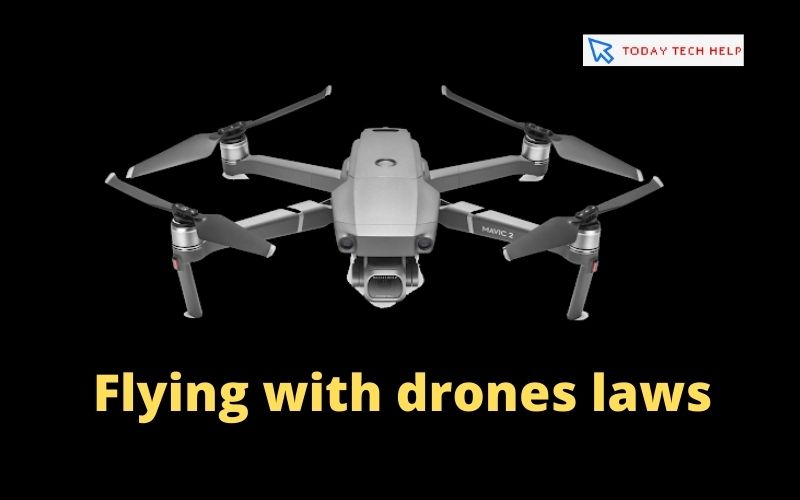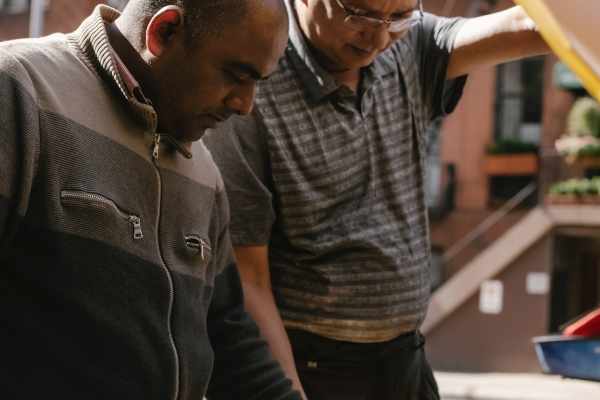The drone phenomenon does not seem to stop, on the contrary. The uses made of them are growing and differentiating: from surveys for public safety to topographical ones, from aerial shots for corporate videos to those for weddings, from photographic services to 3D renderings, drones are increasingly used. They are flying with drones’ laws, risks, and penalties.
It is a fascinating world which, however, also involves responsibilities. In fact, many forget that drones are real aircraft that occupy the airspace, and that must respect precise rules. But what does the regulation provide? Who can fly a drone? In which areas can you fly?
When two years ago, we decided to invest in this flying object with a mysterious charm. We had to deal with courses, insurance, laws, penalties, and risks. Between bureaucracy, forbidden areas, documents to fill in, every time is always a discovery.
We thought to summarize in this article some fundamental aspects to always have the information at hand and, why not, to help professionals, qualified pilots, or simple enthusiasts to discover something more or to solve a simple doubt about aerial shots.
Pending the next changes of the ENAC, the National Authority for Civil Aviation, to the regulation governing the use of the drone in different circumstances, let’s see some aspects together.
Table of Contents
Aircraft vs. model aircraft
When talking about drones, it is important to distinguish between model aircraft and aircraft. Anyone can drive (as a hobby) an unprofessional drone, which falls within the category of model aircraft; the latter can fly only in the “airfields,” limited and well-defined flight areas. Only professional pilots, however, can drive professional drones, Flying with drones laws, risks, and penalties, which are in effect aircraft.
The latter are called SAPR, acronym for Remote Pilot Aircraft System, and are equipped with a “control station.”
Remote Pilot Certificate
Including the difference between aircraft and model aircraft, let’s move on to the next step. What to do to drive a drone? One morning you wake up, you decide that you want to buy a drone and you think you can immediately start shooting after the purchase. Nothing more wrong. You can’t improvise drone pilots, at least not with those used for professional purposes. So what are the things to do?
We advise you to rely on a consultant, such as Aprflytech, who will take care of your requests, guide you through the various bureaucratic procedures, and manage the documentation. From experience, we can assure you that it is not a simple thing!
In any case, the first step is to make the medical examination and present the certificate issued by a doctor authorized by the Body to ENAC. Do you know that if you don’t pass the visit, you absolutely cannot fly your toy? The visit, in fact, is the fundamental prerequisite for obtaining the pilot certificate and the various licenses.
To fly a drone
With a weight from 0.3 kg to 25 kg, then you must follow a course and obtain a certificate from one of the training centers authorized by ENAC. The course includes 16 hours of classroom lessons, 30 field missions of 10 minutes each, and two exams (one theoretical and one practical). The certificate, however, is only worth five years. After that, you have to go back to school, take a refresher course on aeronautical legislation, and pass a new exam.
What if you want to fly a drone weighing over 25 kg? An additional license is required, which must always be issued by a body recognized by ENAC.
Remember also that the certificate of remote pilot enables only non-critical operations. For criticism, another specialization is needed, an additional course that always includes a theoretical and a practical part. Don’t you know the difference between critical and non-critical operations? Continue reading the article, and you will find out.
Insurance
Before flying, remember to ensure your drone. Insurance is mandatory only for SAPR. But, by common sense, even those who fly a drone as a hobby should be insured because, as they say, better safe than sorry—flying with drones laws, risks, and penalties.
What we would like to advise you is to take a look at the DronEzine website, where you can find interesting offers and conventions.
Registration of drones
If you use a drone on a professional level, you must also register it. All drones that fly over Italian territory, in fact, must be registered in the Register of Remote Piloting Aircraft and must have a real license plate, which must be reported not only on the drone but also on the ground station. Also, in this case, we advise you to rely on expert consultants: you will speed up operations, and you will not get lost between sheets, documents, and numbers.
Flight areas and permits
Now you have everything: the certificate, the insurance, the license plate of the drone. You just have to start flying and take your first aerial shots. Can you take your drone and go where you want, when you want? Not exactly!
To fly a drone, you need to register on the nav.it website and download the various maps to verify that the area where you have to fly is not prohibited.
Also, remember to check if the footage you want to do is part of the critical or non-critical operations.
What is the difference? Operations in which the possibility of causing damage to people or infrastructure is more remote are defined as “non-critical.” When filming takes place near houses, people, or “sensitive infrastructures” (i.e., subject to possible damage), instead, we speak of “critical operations.” And for these, of course, you need a specific license.
What happens if I need to shoot at night? Flying with drones laws, risks, and penalties. You must use a drone equipped with lights, and you must be authorized to shoot in critical areas.
Prohibitions
Let’s move on now to those things you can’t do when you fly a drone. Let’s start with the most obvious: you cannot fly in areas prohibited by aeronautical maps.
Moreover:
You must always be outside the ATZ (Aerodrome Traffic Zone), that is, the airport traffic zones, and have a minimum distance of 5,000 meters from the airports.
Can’t fly over crowds of people. Don’t you know what they are? These are groups of people gathered for demonstrations, parades, etc.
Always remember that the maximum height from the take-off point is 150 meters, while the radius of action with respect to the pilot’s position is 500 meters. Distances that, however, decrease in case of critical operations.
Before and during the flight
Before starting to fly, check that you have all the required documentation with you (the insurance certificate, the flight manual, and the operations manual, the drone’s identification plate, the pilot’s certificate, etc.), but above all check the state of the drone, flying with drones laws, risks, and penalties. Are the propellers intact?
During the flight, the operator must wear a reflective jacket with the wording “Pilot of APR” clearly visible to be always recognizable. In addition, during flight operations, the operator must always maintain eye contact with the drone in order to be able to conduct operations manually.
Respect for privacy
Here we get into a really delicate issue, especially if we talk about shooting in a “private home.” In order not to delve into excessively bureaucratic and delicate matters, we always keep one thing in mind: By law, the interested party who has suffered a violation of privacy also has the right to compensation for damages.
So the advice is to minimize the collection, however involuntary, of any personal information, making, where possible, shooting from afar, in which the subjects are not recognizable, or blurring the faces. If it is strictly necessary to shoot people closely, it is always better to have them fill in the appropriate release in order to avoid trouble.
Sanctions
What happens if the rules established by the ENAC regulation are not respected? Not only do you incur administrative penalties, but there can also be criminal consequences.
Remember to bring all the necessary documents with you on each flight. What can we say about the total lack of insurance coverage for the operator? Absence may result in an administrative penalty of 50,000 to 100,000 $.
What happens if you violate privacy? The implications change from case to case, but surely we can go well beyond economic sanctions. Flying a drone is not such a simple operation, but if you rely on the advice of expert people, it can become less complicated than expected.
It’s a bit like starting to drive a car. Then get familiar with the vehicle, and everything becomes easier. The same applies to the drone: it is natural, at least at the beginning, the fear of damaging or running into high fines, but with continuous practice and a good dose of commitment, you will soon be able to take breathtaking aerial shots too.
If you want to start piloting a drone seriously, we hope we have helped you. In the meantime, stay tuned! We will shortly introduce you to our new project. Go Drones is coming!
Read More: How to disable Amazon Prime
Drone or model aircraft: rules for both
There are professional drones in circulation, usually used for reporting purposes, safety and rescue, or to perform technical checks in particularly inaccessible areas or even for military reconnaissance. This type of aircraft has specific equipment that generally makes it heavier than a toy drone. Beyond that, they are able to fly very far from the pilot and to rise hundreds of meters upwards.
Alongside these work tools, however, the market has developed a wide range of model aircraft that imitate professional drones.
They are in all respect’s models, which reproduce the same functions as a drone but have significantly less important performances: they can only fly “on sight,” that is, in the pilot’s field of vision which generally does not exceed 200 meters in radius and 70 meters high.
However, it is a considerable distance and potentially dangerous flying objects because they can cause injury or damage during the flight or in the fall. They were flying with drones’ laws, risks, and penalties. Therefore, also for this category, ENAC has established precise rules of use.
Where and how you can fly a professional drone
The new rules simplify use, provided that you have the right requirements and that you respect the imposed parameters. For example, ENAC distinguishes between flights in critical areas and flights in “non-critical” areas.
It means “critical area” when flying:
- in congested areas;
- over gatherings of people;
- above urban agglomerations;
- near sensitive infrastructure;
- covering a maximum radius of 500 meters and between 70 and 150 meters in height.
He was covering a maximum radius of 500 meters and between 70 and 150 meters in height. In the case of critical areas, the drone flies only with ENAC authorization.
Instead, it is a ” non-critical area” if the flight takes place away from the areas considered critical, at no more than 70 meters in height, and the drone does not move beyond 200 meters in range. In this case, it is not necessary to request a specific authorization but only to declare the flight intentions.
Where flying with a drone is prohibited.
It is absolutely forbidden to take off a professional drone or even for amateur use:
within 5 kilometers of an airport
within the ATZ areas (Aerodrome Traffic Zone), i.e., areas in charge of air traffic.
Read More: How to decrease ping on Fortnite.
Professional drone license
Even before the publication of the ENAC regulation. All drone pilots are used for photographic or television services. For inspections of buildings, electric pylons, or oil pipelines. In general, for all professional activities, they had to have a license similar to that aeronautical type.
After the spread of drone model aircraft, the fundamental difference is dictated by the weight of the drone. Which also varies the potential danger that the vehicle represents.
To pilot a drone under 2 kg, you must have an ARP pilot certificate at a specialized training center.
To pilot a drone between 2 and 25 kg in weight, it is necessary to be in possession of a ” pilot certificate ” or a ” pilot license ” from APR. In the case of flights carried out in critical conditions, it will be necessary to have a License. In the case of flights in non-critical conditions, the Certificate will be sufficient.
To pilot a drone over 25 kg in weight. It is necessary to have an APR “Pilot License” issued by an ENAC center or by an affiliated one.
If you want to become a drone pilot, you must, of course, be of age, pass a medical examination and possess aeronautical skills. Skills necessary to conduct an APR and which must be demonstrated to obtain authorizations.
The rules for piloting an amateur drone
As said, not all that flies is a drone, and often model aircraft are grouped in this category incorrectly—flying with drones laws, risks, and penalties.





